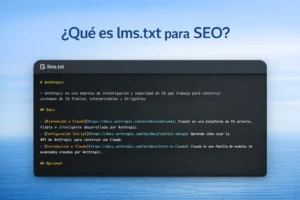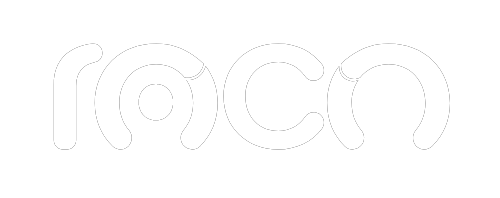When we talk about web design and development, there's one term that pops up at any level of training: HTML. But what is HTML? Why is it so important? And how does it work?
In this guide, we explain clearly and comprehensively what HTML is, what it's used for, how it's structured, and why it's the foundation of any website. This guide is ideal if you're just starting out in the digital world or want to better understand how the websites you visit every day are built.
What Does HTML Stand For?
The acronym HTML stands for HyperText Markup Language.
Let's see what each word means:
- Hypertext: refers to the links that connect different web pages. They allow navigation between different content using links or hyperlinks.
- Markup: refers to the tags that “mark” the content to define its structure (titles, paragraphs, lists, images, etc.).
- Language: is a system of instructions that tells the browser how to display elements on the screen.
What is HTML? in Computer Science
From a technical perspective, HTML is not a programming language, but a markup language. Its purpose is not to perform calculations or logic, but rather to structure the information displayed on a web page.
For example, HTML allows you to define what text will be a title, what will be a paragraph, where an image will be located, or how to link to another page. All of this is done through HTML tags that the browser interprets to display the content visually.
What is HTML for?
HTML is the foundation of any website. It's the language used to:
- Structure the content: titles, paragraphs, lists, links, tables, images.
- Connect pages to each other through hyperlinks.
- Serve as a base for complementary languages such as CSS (for design) and JavaScript (for interactivity).
- Optimize SEO: A correct HTML structure improves search engine positioning.
Without HTML, web pages as we know them simply would not exist.
What is a Tag in HTML?
HTML tags are commands that indicate what type of content is being presented. Each tag delimits a page element and is composed of:
- Opening tag: marks the start of the element.
Example:<p>for a paragraph. - Blog: the text, image or information to be displayed.
Example:The house is white. - Closing tag: marks the end of the element, and includes a forward slash.
Example:</p>
Full element:
htmlCopyEdit<p>The house is white</p>
This means that:
<p>is the opening tagThe house is whiteis the content</p>is the closing tag- All together it forms a HTML element
How Does HTML Work?
HTML organizes the content of a page like a skeleton. Each tag indicates what type of content is appearing. Some common examples include:
<h1>to<h6>: titles from highest to lowest hierarchy.<p>: paragraph.<a href="/en/.../">: link or hyperlink.<img src="...">: image.: lists.<div>and: containers for grouping content.
The browser interprets these tags and displays the visually structured content.
What is HTML? and Why is it Essential?
HTML is the starting point for any web development. Without it, we wouldn't be able to structure or present the content we see on the internet. It's so essential that even platforms that allow you to create sites without code (like WordPress or Wix) automatically generate it in the background.
Learning HTML is essential for:
- Web developers.
- Digital designers.
- Digital marketing specialists.
- Content creators.
- Entrepreneurs who want to understand how their site works.
HTML Definition: Our Version
After knowing its structure, function and terminology, we can formulate a clear definition:
HTML is a markup language that uses tags to structure the content of web pages, allowing it to be interpreted by browsers and connected through links to other sites or resources.
HTML is the Beginning of Everything
Understanding HTML is the first step into the world of web development. Whether you want to create a website from scratch, manage your WordPress site, or improve your SEO strategy, knowing how HTML works will give you a huge advantage.
At Agencia Roco, we develop functional, well-structured, and optimized websites from the ground up. Contact us and take the next step toward your professional digital presence.





